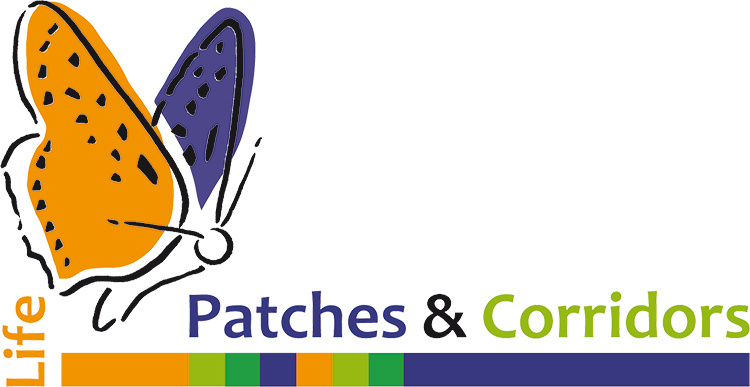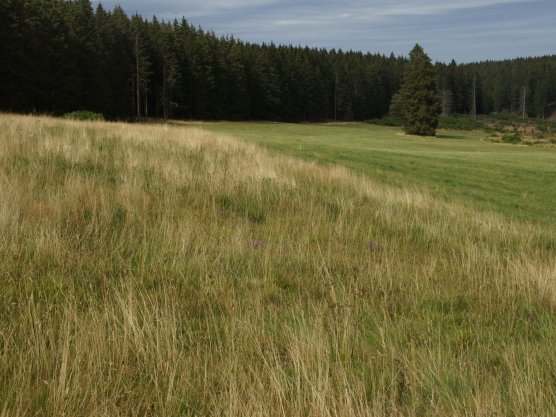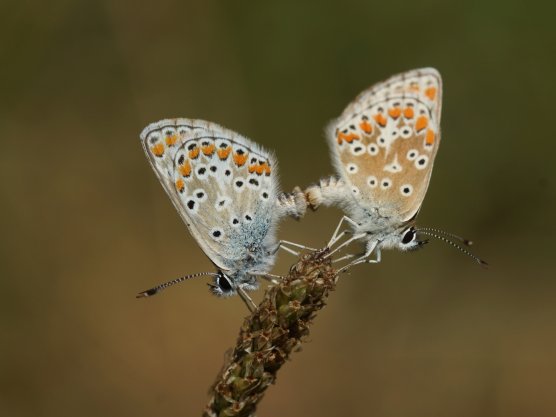
Development of a habitat network for the Violet Copper

Rotational mowing in the National Park shows desired effect
August 26, 2020
…left in peace. For more than ten years, this almost 3.8 hectare area along the Schwarzbach has been mown. In the late Middle Ages it was probably already used as a pasture for cattle before most of it was reforested with spruce trees. When the national park was founded, these trees were gradually felled and the stumps were levelled. Up to now, it was common to use it without fertilizing and to cut the grass from mid-July onwards. Most of the plants can form and seed fruits by this time, so that no species is lost. However, with mowing, habitat - for e.g. insects - is lot!
In agreement with the national park and the farmer working here, it was agreed to let part of the meadow - about 0.5 hectares - grow. In this way, an approximately 300-metre long and up to 30-metre wide flowering strip of indigenous meadow plants will be preserved from mowing. The benefits are striking, for example for butterflies and grasshoppers. Only in this part of the meadow do grasshoppers chirp, butterflies fly or the caterpillars of the swallowtail can be found.
In the coming years we will continue this procedure. However, then the flowering strip of 2020 will be mown and instead a piece of meadow will remain unused elsewhere. We call this process rotational mowing.




